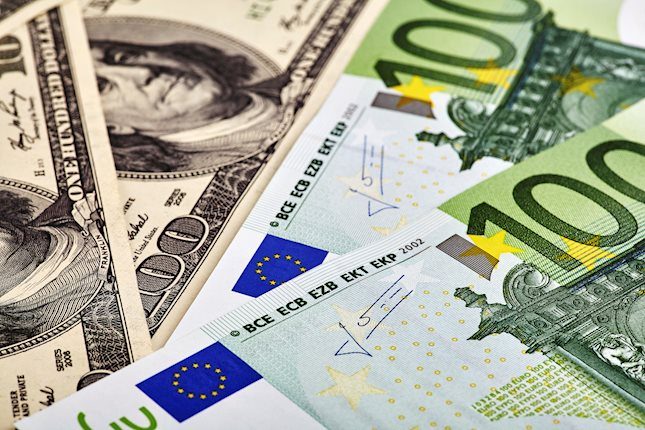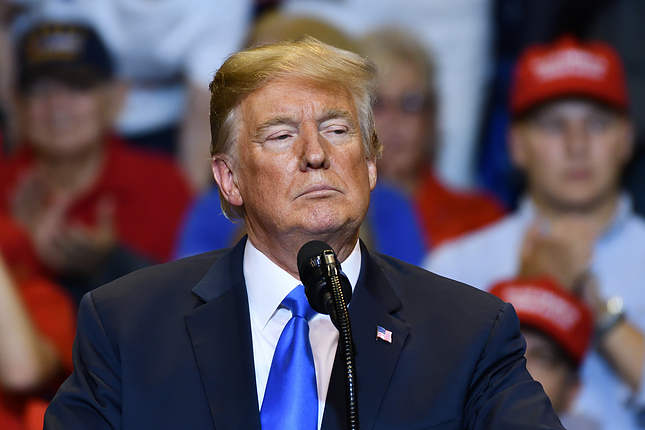A sharp drop in industrial production in September indicates that a full recovery is not yet underway. And political developments over the last 24 hours have further darkened the already bleak short-term outlook for the German economy.
German industrial production fell by 2.5% month-on-month in September from +2.6% MoM in August. On the year, industrial production is down by almost 5%. The drop was driven by all sectors. Activity in the construction sector fell by more than 1% MoM, after the first tentative signs of bottoming out over the summer months.
At the same time, German exports dropped by 1.7% MoM in September, from +1.5% MoM in August. With imports surging by 2.1% MoM, Germany’s trade surplus narrowed to €17bn from €22.7bn in August.
The zigzagging of German industrial data suggests that German industry has not yet entered a period of full bottoming out. In fact, industrial production in the third quarter was still some 2% down compared with the second quarter.
We now expect a winter recession in Germany
German industry has been the best example of the entire economy’s problems over the last few years: stuck between cyclical and structural headwinds and coming to terms with the fact that the traditional macro business model of cheap energy and easily accessible large export markets is no longer working. This is why four-and-a-half years after the start of the pandemic, German industrial production is still more than 10% below its pre-pandemic level.
Inventories have remained at elevated levels for an unprecedented long time. Still, the stabilising of industrial orders in recent months keeps the hope of at least a weak cyclical rebound in industry alive. At the same time, however, capacity utilisation in manufacturing is at its lowest level since 2020. It's only in food and apparel production where capacity utilisation is currently at historical averages. This is not exactly a flattering picture for an industrial powerhouse.
Looking ahead, the last 24 hours have darkened both the short and long-term outlook for the German economy. A second term in office for Donald Trump in the US with the expected new trade tensions will hit the German economy, which has 10% of its exports going into the US. It doesn’t require a lot of imagination to see US tariffs on European cars sending the German automotive industry into deeper problems.
Uncertainty about US support for Ukraine will not only weigh on investment and consumption prospects but is also an important political topic in Germany. This brings us to last night’s news of a collapse of the German government and possibly new elections in March next year. In the shorter run, this collapse is likely to weigh on sentiment and is likely to hold back investments and consumption. On a more positive note, a new government could, and emphasis is on could not will, finally end the current economic policy paralysis in Germany and provide the country with the long-awaited economic policy certainty and guidance on how to restore growth and competitiveness. The policy prescriptions of deregulation, lower taxes, reducing red tape and investments in infrastructure, digitalisation and education are all very well known. Implementing them without – at least temporarily – deviating from the fiscal debt brake currently looks like an almost impossible challenge.
As a result of these last 24 hours, a technical recession in Germany over the winter has become our base case. Looking beyond the winter, the German growth outlook will heavily depend on the ability of a new government to strengthen the domestic economy amid a potential trade war and even stronger industrial policies in the US.
Read the original analysis: German industrial production still not bottoming out
Content disclaimer: This publication has been prepared by ING solely for information purposes irrespective of a particular user's means, financial situation or investment objectives. The information does not constitute investment recommendation, and nor is it investment, legal or tax advice or an offer or solicitation to purchase or sell any financial instrument. Read more here: https://think.ing.com/content-disclaimer/
Recommended Content
Editors’ Picks

EUR/USD extends recovery toward 1.0800 as USD retreats ahead of Fed
EUR/USD continues to push higher toward 1.0800 on Thursday. The pair finds support from a broad US Dollar retreat, as traders unwind their Trump win-inspired USD longs ahead of the Federal Reserve's highly-anticipated policy announcements.

GBP/USD rebounds above 1.2950 after BoE policy announcements
GBP/USD trades in positive territory above 1.2950 on Thursday. The Bank of England (BoE) lowered the policy rate by 25 basis points as expected but the upward revision to inflation projections helped the pair edge higher. Market focus now shifts to the Fed's policy decisions.

Gold rebounds above $2,680, awaits Fed rate decision
Gold recovers following Wednesday's sharp decline and trades above $2,680. The benchmark 10-year US Treasury bond yield edges lower after Trump-inspired upsurge, allowing XAU/USD to hold its ground ahead of the Fed policy decisions.

Federal Reserve expected to deliver 25 bps interest-rate cut, shrugging off Trump victory
The Federal Reserve is widely expected to lower the policy rate after Donald Trump won the US presidential election. Fed Chairman Powell’s remarks could provide important clues about the rate outlook.

Outlook for the markets under Trump 2.0
On November 5, the United States held presidential elections. Republican and former president Donald Trump won the elections surprisingly clearly. The Electoral College, which in fact elects the president, will meet on December 17, while the inauguration is scheduled for January 20, 2025.

Best Forex Brokers with Low Spreads
VERIFIED Low spreads are crucial for reducing trading costs. Explore top Forex brokers offering competitive spreads and high leverage. Compare options for EUR/USD, GBP/USD, USD/JPY, and Gold.